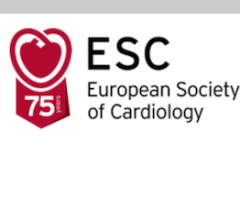
A newly-published study in the European Society of Cardiology’s European Heart Journal is shedding new light on the obesity paradox. Study findings show that if doctors measure the ratio of waist to height in a patient with heart failure, rather than looking at body mass index, the supposed survival advantage for patients with a BMI of 25kg/m2 or more disappears. Photo credit: Getty Images
March 23, 2023 — Newly-published research has debunked the idea that there is an “obesity paradox,” whereby patients with heart failure who are overweight or obese are thought to be less likely to end up in hospital or die than people of normal weight.
The study shows that if doctors measure the ratio of waist to height of their patients, rather than looking at their body mass index (BMI), the supposed survival advantage for people with a BMI of 25kg/m2 or more disappears. The study findings, "Revisiting the obesity paradox in heart failure: what is the best anthropometric index to gauge obesity?" was published on March 22 in the flagship journal of the European Society of Cardiology (ESC), the European Heart Journal.
The “obesity paradox” relates to counter-intuitive findings suggesting that, although people are at greater risk of developing heart problems if they are overweight or obese, once a person has developed a heart condition, those with higher BMIs appeared to do better and were less likely to die than those of normal weight, noted the study summary presented by the ESC. Various explanations have been suggested, including the fact that once someone has developed heart problems, some extra fat is somehow protective against further health problems and death, especially as people who develop a severe and chronic illness often lose weight.
John McMurray, Professor of Medical Cardiology at the University of Glasgow (UK), who led the latest research, said: “It has been suggested that living with obesity is a good thing for patients with heart failure and reduced ejection fraction – which is when the main chamber of the heart is unable to squeeze out the normal amounts of blood. We knew this could not be correct and that obesity must be bad rather than good. We reckoned that part of the problem was that BMI was a weak indicator of how much fatty tissue a patient has.”
As Professor Stephan von Haehling, Consultant Cardiologist, and Dr Ryosuke Sato, a research fellow, both at the University of Göttingen Medical Center (Germany), wrote in an accompanying editorial [2], BMI fails to take account of the body’s composition of fat, muscle and bone, or where the fat is distributed.
According to the ESC overview, the study published is the first to look at different ways of measuring the size and proportions of patients, including BMI, but also anthropometric measurements such as waist-to-height ratio, waist circumference and waist-to-hip ratio, and adjusting the patient outcomes to take account of other factors that play a role in, or predict, these outcomes, such as levels of natriuretic peptides – hormones that are secreted in the blood when the heart is under pressure, as with heart failure.
“Natriuretic peptides are the single most important prognostic variable in patients with heart failure. Normally, levels of natriuretic peptides rise in people with heart failure, but patients living with obesity have lower levels than those who are normal weight,” said Prof. McMurray.
Professor McMurray and colleagues analyzed data from 1832 women and 6567 men with heart failure and reduced ejection fraction who were enrolled in the PARADIGM-HF international randomized controlled trial taking place in 47 countries on six continents [3]. When the patients were randomized, doctors collected data on BMI, blood pressure, anthropometric measurements, results from blood tests, medical histories and treatments. The researchers were interested in which patients were hospitalized with heart failure or who died from it.
An “obesity-survival paradox” showed lower death rates for people with BMIs of 25 kg/m2 or more [4], but this was eliminated when the researchers adjusted the results to take account of all the factors that can affect outcomes, including levels of natriuretic peptides.
First author of the study, Dr Jawad Butt, a research fellow from Copenhagen University Hospital—Rigshospitalet, Copenhagen (Denmark), who carried out the analyses, said: ” The paradox was far less evident when we looked at waist-to-height ratios, and it disappeared after adjustment for prognostic variables. After adjustment, both BMI and waist-to-height ratio showed that more body fat was associated with a greater risk of death or hospitalization for heart failure, but this was more evident for waist-to-height ratio. When looking at waist-to-height ratio, we found the top 20% of people with the most fat had a 39% increased risk of being hospitalized for heart failure compared to people in the bottom 20% who had the least fat.”
McMurray said: “Our study shows there is no ‘obesity survival paradox’ when we use better ways of measuring body fat. BMI does not take into account the location of fat in the body or its amount relative to muscle or the weight of the skeleton, which may differ according to sex, age and race. In heart failure specifically, retained fluid also contributes to body weight. It is indices that do not include weight, such as waist-to-height ratio, that have clarified the true relationship between body fat and patient outcomes in our study, showing that greater adiposity is actually associated with worse not better outcomes, including high rates of hospitalization and worse health-related quality of life."
He added the following observations: “Obesity is not good and is bad in patients with heart failure and reduced ejection fraction. These observations raise the question as to whether weight loss might improve outcomes, and we need trials to test this. In the UK, the National Institute for Health and Care Excellence, NICE, now recommends that waist-to-height ratio instead of BMI is used for the general population, and we should support this for patients with heart failure too."
“It is important because the underdiagnosis of heart failure in people living with obesity is a major issue in primary care. Patients’ symptoms of breathlessness are often dismissed as due solely to obesity. Obesity is a risk factor and driver of heart failure. Whereas in the past weight loss may have been a concern for patients with heart failure and reduced ejection fraction, today it is obesity,” continued McMurray.
Professor von Haehling and Sato offered this in their editorial: “The present findings raise the alarm over the term ‘obesity paradox’, which has been claimed to be based on BMI. Can we tell obese HF [heart failure] patients just to stay as they are? To adequately address this question, not only should the obesity paradox be revisited even in patients with HF with preserved ejection fraction (HFpEF) and in lean HF patients by WHtR [waist-to-height ratio], which better reflects pathophysiological processes of obesity, but also further tests are warranted to validate the effect of weight loss in ‘truly’ obese HF patients with a high WHtR.”
Limitations of the study were noted by the study's authors: it can be more difficult to accurately measure body shapes, such as waist circumference, especially when the measurements are carried out by different people; there may be further unknown factors that could affect the results; the analysis was carried out on measurements and other data taken at the time participants joined the study and did not take account of any changes in weight or waist circumference during the follow-up period; there were no data on the cardiorespiratory fitness of the participants, which could have an effect on the link between anthropometric measurements and outcomes; and, finally, only 153 patients were underweight, with a BMI of less than 18.5 kg/m2 , and 171 patients with a waist-to-height ratio of less than 0.4 (0.5 is considered a healthy ratio), so the study’s findings cannot be extrapolated to patients with low BMIs or waist-to-hip ratio.
For more information: www.escardio.org
References:
[1] “Anthropometric measures and adverse outcomes in heart failure with reduced ejection fraction: revisiting the obesity paradox”, by Jaward H. Butt et al. European Heart Journal. doi:10.1093/eurheartj/ehad083
[2] “Revisiting the obesity paradox in heart failure: what is the best anthropometric index to gauge obesity?” by Ryosuke Sato and Stephan von Haehling. European Heart Journal. doi:10.1093/eurheartj/ehad079
[3] PARADIGM-HF (Prospective comparison of ARNI with ACEI to Determine Impact on Global Mortality and Morbidity in Heart Failure) was a randomised, double-blind, placebo-controlled trial in patients with chronic heart failure with reduced ejection fraction (HFrEF), evaluating the efficacy and safety of angiotensin receptor-neprilysin inhibitor saubitril/valsartan compared with enalaparil, added to standard care.
[4] The study used the World Health Organization BMI categories: <18.5 kg/m2 is underweight, 18.5-24.9 kg/m2 is normal weight, 25-29.9 kg/m2 is overweight, and 30 kg/m2 upwards is obese.


 November 17, 2025
November 17, 2025 









